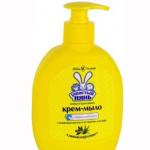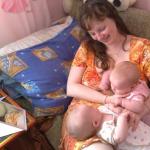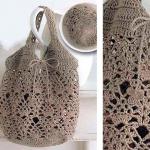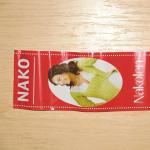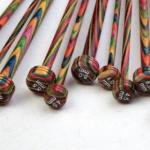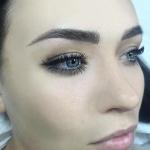Drawing lesson for an early age group. Notes on drawing nodes for young children
Drawing at an early age
Early age is the period when not only playful, but also productive activities of the child begin - drawing, modeling, appliqué, design. Their occurrence is also closely related to objective activity.
In the formation of a child’s personality, various types of artistic and creative activities are of invaluable importance: drawing, modeling, cutting out figures from paper and gluing them, creating various designs from natural materials etc.
Such activities give children the joy of learning and creativity. Having experienced this feeling once, the child will strive to tell in his drawings, applications, and crafts about what he learned, saw, and experienced.
The visual activity of a child, which he is just beginning to master, needs qualified guidance from an adult.
A child’s visual activity is preceded by a fairly significant preparation period, during which he becomes familiar with the basic properties of the necessary materials, acquires the necessary skills and abilities in using pencil and paper.
There comes a time when a child, sometimes accidentally or with the help of adults, draws a line on paper with a pencil. The first strokes are mostly interrupted, the end of the pencil either touches the paper or flies through the air.
Once children begin to use a pencil, they happily draw for hours at a time.
In order to imitate the fine movements of an adult, the child needs to learn to control his movements. Children who do not have drawing supplies at their disposal do not show interest in visual arts for a very long time.
The child’s first strokes do not yet express anything, although they are important for the development of visual activity. At the age of 1 year 8 months to 3 years, under the influence of looking at pictures, observing the process of drawing by adults and some personal experience the child learns that a sheet of paper, covered with a pencil, represents a “drawing” or “picture.” Reading your own drawing happens completely by accident - several lines evoke by association the image of a particular object. The child makes an important discovery: his drawing represents something. Moreover, the same combination of lines can be interpreted by a child in different ways. For example, when a boy first identified the same combination of lines as “uncle”, the next day - as “cog”, and two days later - as “fly”.
The child’s own attitude towards his drawing is also interesting. It is characterized by the fact that while drawing, modeling, or applique, the child acts as in a real situation. Having pasted, for example, the silhouette of a bunny, bear or bird, he strokes them with his hand, talks, and begins to play with them.
The development of drawing at an early age is closely related to the mental achievements of the child. With the same external form of scribbles, their meaning for the child changes.
An important role in the emergence of a child’s visual activity belongs to an adult, who not only creates favorable conditions for the timely emergence of its prerequisites, but also actively influences the process of enriching the preschooler’s sensory abilities and the formation of the first graphic images.
In the studies of V.S. Mukhina notes that exercises in the field of visual perception contribute to the development of observation, visual memory, and the ability to more precise definition spatial relationships, subtle discrimination of shape and color, comparison. Features of perception, as the main indicator of a child’s sensory development, depend on differences in the state of the perceptive apparatus: vision, tactile sensations, etc., which contributes to the development of thinking, attention, and imaginative imagination. Comparison, abstraction, generalization, analysis and synthesis - all these various mental operations take place in the process of drawing.
Unlike children early age, y younger preschoolers in drawings and applications you can see an objective similarity with objects and phenomena. Recognition helps to consolidate in the child’s mind the connections between the actions of the hand and the resulting image. At first, the connection between movements and image is unambiguous. The child learns it by imitating an adult. In younger children preschool age, according to L.S. Vygotsky, the formation of an artistic and figurative basis of activity occurs when they convey objects and phenomena with lines, strokes, strokes, a spot of color, and a contour. The adult directs the children’s attention to the location and nature of the color spots, which in one case may be “ autumn leaves"or "bright lights", in another - a pattern for a dress. Depending on the background of the paper, its combination with the color of the lines and strokes, the children have various associations with images of objects and phenomena.
In the process of creative activity, the person himself changes - the form and method of his thinking, personal qualities. Creativity in a broad sense, according to V.S. Mukhina, this is an activity aimed at obtaining something new. The novelty of discoveries and products is subjective and this is the first important feature children's creativity.
Drawing, modeling, applique are types of visual activities, the main purpose of which is a figurative reflection of reality.
In the process of drawing and appliqué, all types of memory develop. Figurative memory, according to V.S. Kuzin, is of particular importance in the process of visual activity, determining the necessary supply of visual ideas for the painter. Along with the motor memory in drawing is a necessary prerequisite for developing a strong skill of automatically subordinating the movements of the hand, drawing the line, to the eye, which determines the direction, the magnitude-spatial relationships of the lines.
At first, children become interested in the movement of a pencil or brush, in the marks they leave on paper; New motives for creativity gradually appear - the desire to get results, to create a certain image.
Classification of teaching methods.
The success of education and training largely depends on what methods and techniques the teacher uses to convey certain content to children, develop their knowledge, skills, and abilities, as well as develop abilities in a particular area of activity.
Methods of teaching visual arts and design are understood as the system of actions of a teacher who organizes practical and cognitive activity children, which is aimed at mastering the content defined by the “Program of Education and Training in Kindergarten”.
Teaching techniques are the individual details, components of the method.
Traditionally, teaching methods are classified according to the source from which children acquire knowledge, skills and abilities, and according to the means by which this knowledge, abilities and skills are presented. Since preschool children acquire knowledge in the process of direct perception of objects and phenomena of the surrounding reality and from the teacher’s messages
(explanations, stories), as well as in direct practical activities (construction, modeling, drawing, etc.), then the following methods are distinguished:
Visual;
Verbal;
Practical.
This is the traditional classification.
IN Lately developed new classification of methods. The authors of the new classification are: Lerner I.Ya., Skatkin M.N. it includes the following teaching methods:
Informative - receptive;
Reproductive;
Research;
Heuristic;
Method of problematic presentation of material.
The information-receptive method includes the following techniques:
> looking at;
> observation;
> excursion;
> example of a teacher;
> showing the teacher.
The verbal method includes:
> conversation;
> story, art history story;
> use of teacher samples;
> artistic word.
The reproductive method is a method aimed at consolidating the knowledge and skills of children. This is a method of exercises that bring skills to automaticity. It includes:
> reception of repetition;
> work on drafts;
> performing form-building movements with the hand.
The heuristic method is aimed at demonstrating independence at some point in the work in the classroom, i.e. The teacher invites the child to do some of the work independently.
The research method is aimed at developing in children not only independence, but also imagination and creativity. The teacher offers to do not just any part, but all the work independently.
The problem presentation method, according to didactics, cannot be used in teaching preschoolers and junior schoolchildren: it is applicable only for older schoolchildren.
In his activities, the teacher uses various methods and techniques in drawing, modeling, appliqué and design.
So in drawing, the main technique for the first junior group is to show how to use pencils and paints. The most effective technique is passive movements, when the child acts not independently, but with help.
Playful visual movements of a homogeneous, rhythmic nature with the pronunciation of words: “here - here”, “up and down”, etc. are effective.
This technique makes it possible to connect the image of an object with pictorial movement.
Reading poems, nursery rhymes, and songs in class is the most important methodological technique. Another method of working in the first younger group- co-creation between teacher and children.
In the second junior group, the information-receptive method is actively used in drawing classes. Especially useful before class effective way getting to know the shape of an object: children trace the shape with their hand, play with flags, balls, balls, and feel their outlines. Such examination of the subject creates a more complete picture of it. Also effective is the technique of examining an object by moving your hand along the contour and showing this movement in the air.
Ksenia Mikhailova
Software tasks:
Artistic and aesthetic development: learn to depict the same object in two colors, forming an idea of color combination. Develop interest in the creative process.
Cognitive development: teach to see the beauty of apples and apple trees at different stages of fruit ripening. Evoke a positive emotional response to the beauty of nature. Teach purposeful actions with objects, imitate new actions.
Speech development: formation of a culture of communication (use of greetings and farewell words). Develop the ability to understand the text and perform appropriate movements according to the model. Stimulate speech development through the development of fine motor skills and tactile sensations. Develop active speech. Add words to your vocabulary: apple, hare, house, tree.
Material:
A house, a toy hare, a sheet of paper, half an apple, green, brown and yellow finger gouache, a brush, a container of water.

Progress of the lesson:
Educator: Children, today we will go to visit you. Do you like to visit? And I love visiting. Then let's all go together.
Outdoor game:
Top, top legs
They walk along the path.
The path is crooked -
No end, no edge.
We go, we go, we go (walking)
And we don’t get tired at all.
This is how the feet walk
Along a crooked path.
Top, top, top. (run)
And then all together stop! three jumps in place
Speech game:
Q: In a clearing behind a bush I saw someone’s house,
The bunny lives in the house and invites all the children to visit.
We came to visit the bunny, his name is Ushastik. What should we say when we meet someone? That's right, you need to say hello! How soft and pleasant it is to the touch! Hello, Ushastik, I’m Ksenia Vitalievna, and these are my kids! (children greet the bunny and say their name)
Let's look carefully at the bunny. Does he have long ears? That's right. Show off your ears (children show ears) Does he have eyes? That's right. Where are your eyes? (show eyes) Does our little bunny have a belly? That’s right. Where are your bellies, kids? (pats self on tummy)

Logorhythmic game:
Once upon a time there were bunnies
On the edge of the forest.
(spread your arms in front of you, describing a circle)
Once upon a time there were bunnies
(show bunny ears on head)
In a gray hut.
(fold your arms above your head in a house shape)
Wash your ears
(run your hands over imaginary ears)
We washed our little paws.
(imitate hand washing)
Bunnies dressed up
(arms on sides, turn slightly in both directions, in a half squat)
We put on slippers.
(arms on your sides, alternately put your right and left legs forward)
Educator: Our Little Bunny is hungry, what can we feed our Ushastik? (children's answers) We will collect fruits and vegetables for the bunny. Let's go.
(Pour fruits and vegetables out of the basket onto the floor)
Children collect fruits and vegetables.
Q: This is the harvest we collected for Ushastik! The fruits are so tasty and the vegetables are crispy! Really delicious. Our little bunny is very happy.
Artistic creativity:
Group work "Apple tree for a bunny."



Children take turns making prints with apple halves, prepared in advance. (the teacher paints the apple halves with a brush) When all the children have made a print, the teacher uses a brush to draw the trunk of an apple tree.
Q: Children, we made a very beautiful apple tree. Now our little bunny will always have something to eat. He will eat apples from our apple tree.
Zainka liked to play with you, collect fruits and vegetables, but most of all he liked your gift - the apple tree that we drew for him.
What great guys you all are. Let's pat ourselves on the back for that.



Surprise moment:
Q: Well, it’s time to say goodbye, let’s say “Thank you” and “Goodbye” to the bunny. IN next time Shall we go visit Ushastik again? Yes? So we'll definitely go!
And I also have a treat for you. Sit down at the tables, we will also eat apples.
Publications on the topic:
Summary of educational activities for cognitive development in the early age group “Bunny visiting the children” Objectives: 1. To promote the formation in children of an initial interest in knowledge. 2. Promote the development of children's skills independently.
Summary of educational activities in the early age group on sensory development “Bunny and Hedgehog Visiting the Children” Topic: “A bunny and a hedgehog visiting the children” Goal: to teach children to select objects based on color, by display and by verbal designation.
MBDOU kindergarten No. 16 “Pearl” Summary of OOD in the region “ cognitive development"in the early age group "Krokha" on the topic: "Getting to know each other.
Summary of entertainment with young children “Visiting Grandma Matryona” Summary of entertainment for young children “Visiting Grandma Matryona” Purpose: 1. Create a joyful, cheerful atmosphere for children.
Lesson summary for the second early age group “Visiting Mishka” Goals and objectives: To develop children’s ability to distinguish and name primary colors. Learn to group colors. Develop fine motor skills, coordinated.
GCD for visual arts (drawing)
Subject: Sun and grass.
Program content: Teach children to create an elementary landscape, use paints of different colors at the same time, strengthen the ability to draw rounded closed lines and draw vertical lines, and cultivate interest in drawing.
Material: paint in two colors: yellow and green, paper, landscape sample.
Preliminary work: Watch the sun and grass through the window. The sun is shining above, and grass is growing on the ground below.
Vocabulary work: Yellow sun, green grass.
Progress of classes:
Educator: Children, let's sit correctly: hands on the tables, legs together on the floor, back on the back of the chair. (A knock is heard). Oh, children, someone has come to us. Shall we let him in or not?
Children: Let's go.
Educator: If so, let's say together, “Please come in.” (The door opens and the “Tanya” doll “comes in”).
Educator: Tanya, we are so glad that you came to us. Let's, children, say “Hello” to the Tanya doll.
Children: Hello.
Educator: Tanya, you’re probably tired, sit down on a chair. Like this. (The teacher places the doll on a chair and notices the picture in the doll’s hands).
Educator: Look, children, our doll brought something with her. Can we see what you have there, Tanechka? (The teacher takes the picture from the doll and shows it to the children.)
Educator: What does she have?
Children: Painting.
Educator: Also, what is in the picture?
Child: Grass.
Educator: What kind of grass?
Child: Green grass.
Educator: Please show me green color. Well done, children. Children, do you like the picture?
Children: Like!
Educator: Children, let's draw the sun and grass. Now I will show you how to draw. Look carefully. Here we will draw a sun at the top. It's round, like a ball. Like this. (The teacher shows.) And green grass grows below. Let's draw a lot of grass, side by side. Here's some grass, next to it there's more grass. (The teacher shows.) How much. Here is the picture. Let's draw in the air together. Take the right brush and draw a round sun. Educator: That's right, let's draw green grass. Like this. Well done, children. Now I’ll hand out some leaves, and we’ll draw on the leaves. (The teacher hands out paper.) Well, now let's draw, show the doll that we can draw too. Let's take the right brush and draw a sun at the top. Everyone drew the sun
Educator: Many have already drawn. Doll Tanya wants to look at your drawings. (The teacher, together with the Tanya doll, goes around the tables. At each table, the children, together with the teacher, choose the best drawing and give it to the doll).
Educator: Well done, children. Worked well in class. Doll Tanya is very happy for your drawings. She thanks you and bids you goodbye. Goodbye!
The lesson is over.


This methodological manual contains lesson notes on the development of speech perception in children 5-6 years old with a delay mental development, as well as planning work with this category of children.
This methodological manual contains lesson notes on the development of elementary mathematical representations in children 5-6 and 6-7 years old with mental retardation, as well as planning work with this category of children.
Lesson notes can be used by teachers of correctional groups kindergarten, speech therapists, parents, as well as speech pathologists primary classes in working with children who have problems with learning educational material in preparation for school.
Notes are offered to your attention complex classes with children of the third year of life. The book provides recommendations for conducting extended classes with children of primary preschool age (2-3 years). The author talks about the methodology for conducting them, and also gives detailed notes on 56 lessons with the smallest children.
The publication is intended for teachers of preschool educational institutions, institutions additional education, as well as for parents who want to have fun with their kids.
Toolkit contains all the materials necessary for conducting classes on speech development and familiarization with fiction V preparatory group preschool: program, methods for identifying the level of speech development, lesson notes and guidelines to them.
The book also includes texts of literary works recommended by the authors for children.
The book presents notes for the first time speech therapy sessions on the development of speech of children of middle preschool age in kindergartens, nurseries, orphanages and orphanages.
The book is intended for teachers, methodologists, speech therapists of preschool educational and medical institutions
The book gives thematic planning and lesson notes in various areas of development of children of senior preschool age: familiarization with the outside world, speech development and mathematics, drawing and appliqué, design and manual labor. All classes are combined into one common theme"Winter". To help the teacher, materials on planning lessons, organizing children's games and experimentation are also provided.
The book contains a system of developmental activities visual activities with children 2-3 years old (65 notes with methodological recommendations). All classes are interconnected, meaningful and aimed at implementing the basic tasks of the artistic and creative development of children, formulated in the preface. The “Appendix” provides materials for conducting aesthetically pleasing entertainment with children in the classroom and in Everyday life. The educational manual is included in the author's program artistic education, training and development of preschool children “Colored Palms” (the full structure of the program is presented on the colored tab in the “Appendix”).

This manual contains methodological recommendations, lesson notes, diagrams and applications for teaching older preschoolers the art of origami. Using the materials from the manual, children will learn how to independently fold simple origami figures according to diagrams, create their own toys and crafts, and gain confidence in their strengths and abilities.

